Managing Mental Health
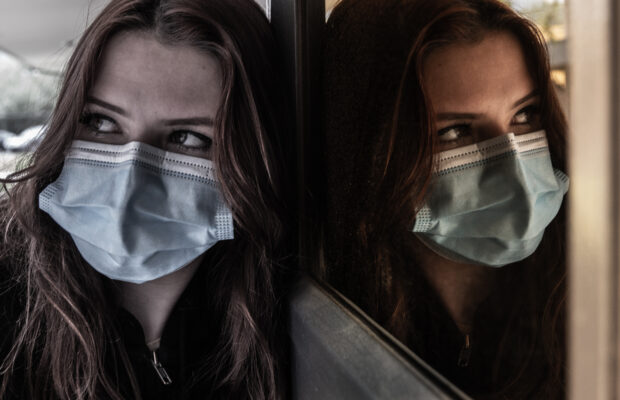
As people experience online school, social injustices and loneliness through the pandemic, mental health has been severely impacted. Although we have come a long way in deconstructing the stigma behind mental illness, student voices have shown that there is still more work to be done.
Mental health is not a binary issue, and each student has their own unique experiences. The best accommodations cannot be made without a true understanding of the hardships students are facing today. Below, several members of our campus shared their stories with the Prowler.
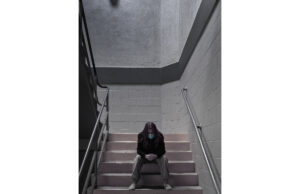
Sam* (they/them)
“I’ve always had people that just didn’t really like me, but it’s been a lot more apparent recently, which kind of made me feel worse because I expect people at school to be more kind and understanding, which is not the case at all this year. A lot of people have shown their true colors and that really hurts.”
Sam*, sophomore, faces the normal teenage pressures of schoolwork while also facing discrimination since coming out.
“Certain people at school have outed me about my sexual identity, as well as my gender and pronouns, and it did not [end well],” Sam said. “It was really interesting going back to school and seeing people after a year and them just being completely different, treating me horribly because of something that I don’t feel the need to fake or control.”
Earlier this year, Sam received a number of death threats from peers to discourage their participation in a school activity. “I got a bunch of messages from the same Instagram accounts saying ‘if you look like that, you’re obviously depressed, which means that you self harm’ and ‘that’s why you wear long sleeves all the time, you’re so depressed, just go kill yourself already,’” Sam explained.
Like many LGBTQ+ students, Sam turned to social media in the face of adversity from peers, which has become somewhat of a safe haven for them. “Most of my friends are online because it’s easier for me to get along with people that I know are kind of like me, based on how they present themselves and what they say or post about,” Sam said. “In school, it’s kind of hard to find those people.”
Sam expressed hesitance using school resources, citing confidentiality as a major point of concern. “I feel like everything I say will eventually get back to someone else. Even when I specifically asked for something not to be released out publicly, where it doesn’t have to do with me being potentially dangerous to myself or others, it still seems to make its way out,” Sam said.
Sam advocates for those silently struggling like them and encourages people to not make assumptions about the mental states of others. “Anyone can have bad mental health but a lot of people hide it pretty well. You might not even know if your best friend or family members have really bad mental health just because they don’t show it.”
Eva* (she/her)
“Knowing that we’re kind of in a state where we couldn’t really do anything other than just kind of hope that things would get better…Just worrying, constantly worried about where to get money, or just like, if we’re going to be safe or okay, I think is definitely something that took a big toll.”
The recent rise in Asian hate crimes has led to the deterioration of the mental and physical welfare of Asian Americans. Eva*, junior, a first-generation Asian American immigrant, has been forced to remain permanently fearful of the dangers her family and their small business face from not just the COVID-19, but prejudice and hate.
“My parents, they just try to protect me as much as they can, they only bring it up momentarily. And they’ll try to switch conversations- I think that just goes to show how it’s affecting them, too. But I know, as a family member and as their daughter, it’s something that they’re definitely fearful of,” Eva said. “With my grandparents, language barrier is kind of hard to overcome when trying to talk about these topics- trying to tell them ‘don’t go outside alone,’… ‘always try to be with someone.’ Trying to relay those messages was super difficult.”
The worry is just as persisting for herself. “There was one thing that my mom sent me one time, and it was like this girl, getting abused and hit in an elevator, and she was alone. My mom was telling me, ‘Don’t get into an elevator alone, never be in an elevator alone, instead of taking the elevator, take the staircase’ and I was just like, ‘What’s safer? They could both equally be harmful,’” Eva said. “In any place, you can equally be unsafe or just hurt.”
The anxiety comes in waves, Eva explained, but social media no longer serves as a safe escape for her. “Going online is definitely a thing that has been increasingly more difficult recently. You kind of see all these happy people. And then, you see these devastating stories of all of these people getting hurt,” Eva said. “Every time I see it, I end up just kind of skipping through the story just because I don’t want to live it through the experience of just going through that same fear and trauma again and again.”
Each story reminds her of the dangers her own family faces. “Seeing [these stories constantly] triggers a different stress and a lot of fear of the world, and living in it,” Eva said. “It’s really scary, seeing these people [who have] worked so hard for us, immigrants, like me, and others, many others too, it’s pretty difficult…they had to make a lot of sacrifices for us. It hurts seeing them be targeted and abused.”
Liam* (he/him)
“It’s just been a time of really just second guessing. Am I the one that’s doing the right thing? Are they the ones that are doing the right thing? I’m upset with them… Should I be? Am I being irrational? Are they being irrational?”
Liam*, an NPHS teacher, has had to deal with numerous internal battles. “I’ve gone through periods of second-guessing myself and not knowing if I’m doing the right thing for my kids or my family,” Liam said.
“[There was] stress of not knowing whether I was doing the right thing by my kids by keeping them home and having them learn online and worrying about what my retiree parents were doing, [or] whether they were taking it seriously and wearing their mask for God’s sake,” Liam said. “It was just a very worrying time.”
Remote and hybrid learning only complicated the issue. “[There] was a very heightened level of stress because [of] the district mandated virtual classes. They were basically just thrown at teachers with little guidance and little time to figure out how to do things,” Liam said. “There were some district mandated training sessions that were, in my opinion, very inadequate. Recreating how teachers teach all of our classes in a couple of weeks was very stressful.”
Alongside many other teachers, Liam has not felt heard or supported by the community. “For me, as a teacher and as a parent, [I did not feel] like my concerns or frustrations have been heard, addressed or really understood by the admin, or even the district…I’m not sure that any of my concerns really ever mattered, not even to my own [teacher’s union],” Liam said. “I’m not saying that anybody was having nefarious motives. School had to be done virtually…the district tried to train us as best as it could within that two week period…But, I wish we would have known earlier and I don’t really hold anybody at fault.”
However, for Liam, there is light at the end of the tunnel. “As things have improved numbers-wise and infection rate wise, a lot of progress is being made now, and I am not as stressed out or I don’t feel like I did in the beginning,” Liam said.
Jeanette Zollinger (she/her)
“When I’m at my most ill, I feel like it’s going to be that way forever and never change. So one of the things I’ve learned most is that these dark times are temporary. I just need to sit through it and allow my body and my mind to feel what it’s feeling. I’m just giving myself the grace to feel, and I think a lot of people need that.”
Mental health resources have been an asset to many within the past year, including Jeanette Zollinger, an NPHS teacher. “I actually had been on medication for multiple years and I have done therapy… I reached out to my therapist again during COVID,” Zollinger said.
Being able to connect with a therapist allowed Zollinger to hear another perspective and learn skills to improve and manage her mental health. “She just really helped me put into context that I wasn’t alone, that everyone else was struggling too, and that gave me comfort,” Zollinger said. “But also, she just gave me little, small tasks to do, and as I built up on those small tasks I started feeling better and better.”
Zollinger expressed her gratitude for being able to return to the therapist she worked with in the past. “One of the big blockages for me was not wanting to start over with another therapist. So I’m really grateful for telehealth because it allowed me to pick up where I was with someone who already knew me,” Zollinger said.
She stressed the importance of finding a compatible therapist. “Finding the right therapist is like dating, and you can absolutely fire your therapist. You should be dating around until you find a person who really understands your values,” Zollinger said. “It is hard to do, but just be patient because the right person can be life-changing for sure.”
Through her own experiences with mental illness, Zollinger has strived to create a supportive classroom environment for her potentially struggling students. “I volunteer for AFSP, the American Foundation for Suicide Prevention, and I am one of the co-chairs of the Central Coast chapter, so I am always telling my students that I want to be a safe space for anyone who needs that,” Zollinger said. “We really just have to keep repeating it, so if a person is in a dark space and needs help, they know that there are people they can reach out to.”
Monica Reverente (she/her)
“My mental health took a nosedive from suddenly being in school and socializing all the time to being trapped in my room and not being able to do anything, having that constant fear of: ‘What’s going to happen to my future? What’s going to happen to my house? Is my mom going to be alright? Is my family going to be alright?'”
Monica Reverente, junior, has struggled with distance learning, family conflict and social life.
“I kind of alienated everyone…I remember not being able to get out of bed, and my mom was worried that I would get bed sores because I would barely get up to eat. I wouldn’t really shower, I would stay in my room, and I would just sleep all day,” Reverente said. “My teachers were starting to get really concerned, they’d started emailing me and emailing my mother.”
Things got harder in September 2020. “I had gotten into a fight, and I ran away from home…Whenever I wasn’t doing well in school, it would put a lot of stress onto my mom, but because of her, and the way that she would deal with that stress, it would bounce back like a mirror,” Reverente said. “[She] would end up with outbursts of anger, and I would be on the receiving end of that. [She would say,] ‘Why are you not doing enough? Why are you sitting around being sad? Other people have it worse than you. You’re not allowed to feel this way, you have responsibilities.’”
Away from home, Reverente ended up staying with a friend’s family. “[They were] very welcoming…the atmosphere was always so loving. I would always compare her family to mine,” Reverente said. “I would tell that to my mom. I’d be like, ‘Why, why are they not aggressive? When they interact with each other, it’s with warmth, it’s kindness, listening, forgiveness, it’s not always about expectations and not meeting that expectation.’”
After a few days, Reverente came back home to her family. “I felt a lot of shame for running away, but at the same time, I knew I needed space from what was happening,” Reverente said. “Things slowly got better, and my mom started to listen more and be more understanding.”
Reverente’s mental health has since improved with the support of her friends and therapists. “Something I didn’t know before all of this happened, was that you can reach out to people,” Reverente said. “You should let people around you support you. It doesn’t make you weak to ask for support. Let people around you listen and support.”
The state of mental health
A recent survey the Panther Prowler sent out to students in classrooms, Zoom chats, and across social media was filled out by 207 students. A similar survey was sent out to faculty through email and received 54 responses.
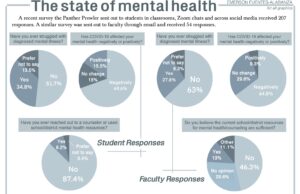
Student opinion
A majority of students continue to face mental health struggles, but have not reached out.
Tiana Hoang, junior, says she knows about the resources the school provides, but has never felt comfortable using them. “I know it’s an option, but the reason I don’t go is that I haven’t heard a lot of good feedback,” Hoang said. “My counselor is not even approachable for things within scheduling. I’m sure she has a lot of responsibilities…[but] I really talk to her about as minimally as I can.”
However, a handful of students have expressed positive experiences after reaching out or using existing resources. Evan Bolanos, senior, has spoken with his counselor multiple times. “With school in general, and some, just some of the classes I would struggle with, it was just definitely nice to have her support,” Bolanos said. “I’m very comfortable with her. I think she’s like, amazing, I’ve nothing but positive things to say about her.”
Kalea Villanueva, junior, was diagnosed after reaching out to her counselor. “I didn’t feel comfortable at first,” she said. “Reaching out to an adult when you don’t know what’s going on with you can be scary, but afterwards I realized they’re there to help you, so it’s definitely worth reaching out and trying to get more comfortable with it.”
Villanueva shared a couple of tips for students just getting comfortable. “You don’t have to do it face-to-face at first, which is one of the scariest things,” she said. “Just emailing them, or not doing it face to face can make it a lot less intimidating.”
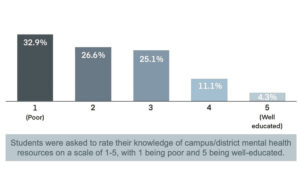
Mental health support systems in CVUSD
CVUSD campuses have made efforts to prioritize mental health. One major step taken within SDAC was the creation of a mental health subcommittee, led by Michael Lindroth, junior.
This year, they have devoted themselves to multiple projects, including increasing the visibility of mental health resources. “We’ve been sending the information out in newsletters and trying to get teachers more aware of them as well so they can communicate that to students,” Lindroth said.
More recently, students in the subcommittee have been giving presentations about mental health. “We’re working with staff members in our district to give them a student perspective on mental health and communicate with them what students need to be supported in mental health situations,” Lindroth said.
Another major initiative they have undertaken has been to make existing resources more accessible. “We have a very high student-to-counselor ratio in our district and because the counselors have to help so many students, it can often be difficult for students to get as much attention as they maybe deserve,” Lindroth explained. “We’ve been trying to improve the relationship between students and counselors…making them less of an academic resource and more of both an academic and mental health resource.”
CVUSD counselors aim to make themselves available to students. “We’re advocates for kids… if we think a kid needs something, we’ll do what we can to help them get it,” a CVUSD counselor said. “[Our duties cover] pretty much the entire gamut of social-emotional development and academic and career.”
In response to concerns students raised, counselors expressed the difficulties with walking the line of confidentiality. “If you’re hurting yourself, or you’re thinking of hurting others, or somebody’s hurting you, those are three things that we have to let people know,” one counselor clarified. “But, we try to work with the students and ask, what can we do to help?”
Counselors the Prowler spoke to were focused primarily on student comfort. “If we had less kids on our caseload, and we were able to…introduce ourselves…I think that would probably make a lot of kids more comfortable,” one counselor said.
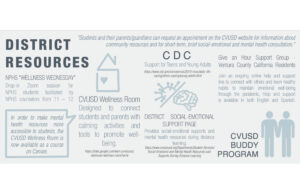

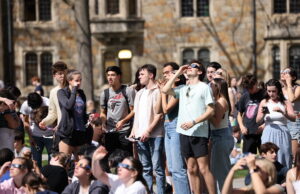


1 Comment